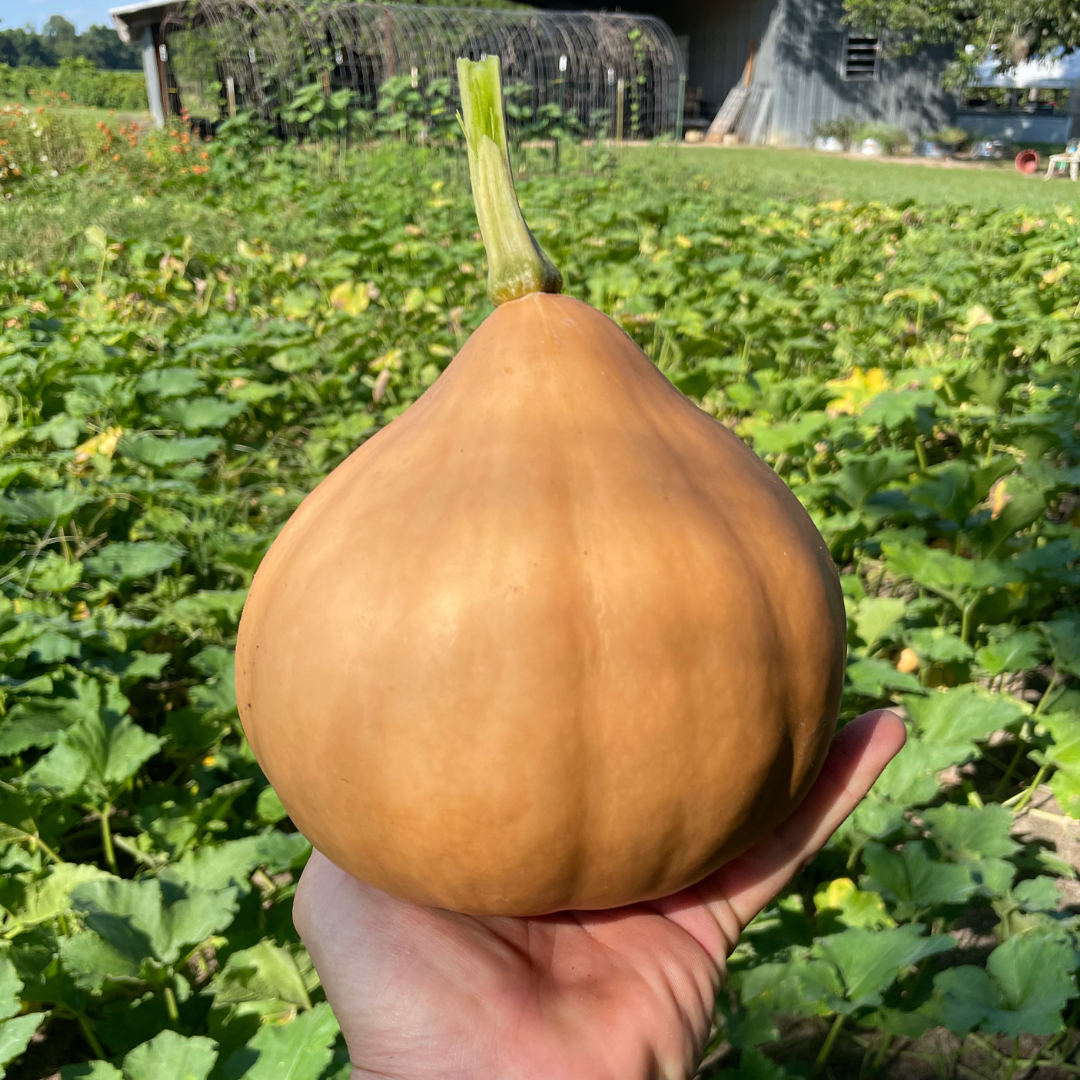Seminole Pumpkin Seed
Seminole Pumpkin Seed
Couldn't load pickup availability
Seed Type
Seed Type
Open Pollinated (Untreated)
Seeds Per Pack
Seeds Per Pack
15
Days to Maturity
Days to Maturity
110
Disease Resistance
Disease Resistance

Why Grow Seminole Pumpkin?
Incredible Disease Resistance Seminole Pumpkin (Cucurbita moschata) is a powerhouse variety that thrives in hot, humid climates where other pumpkins struggle. This vigorous grower produces sprawling vines loaded with small, sweet, tan-colored pumpkins perfect for baking, roasting, or making soups. Known for its incredible disease resistance, Seminole Pumpkin stands strong against powdery mildew and downy mildew, ensuring healthy plants deep into the season.
Squash Vine Borer Resistant One of its greatest advantages is its natural resistance to squash vine borers—one of the biggest threats to homegrown pumpkins and squash. Gardeners plagued by this pest will love how Seminole Pumpkin continues to flourish when other varieties succumb. Plus, just a few plants can yield a massive harvest, making it one of the most prolific pumpkins you can grow!
A Wonderful Heirloom! Originally cultivated by the Seminole people in Florida, this heirloom variety has stood the test of time due to its reliability and ability to produce even in challenging conditions. Whether you’re looking for a nearly foolproof pumpkin to grow in the South or simply want a low-maintenance, high-yielding variety, Seminole Pumpkin is the perfect choice.
Seminole Pumpkin Growing Tips
• When to Plant Pumpkins
Pumpkins are a "warm season" vegetable that can be started indoors and transplanted, or directly sewn in the garden once the risk of frost has passed in the early spring months. Pumpkins typically take 110 days or more to mature, so be sure to plant early enough if you live in a climate with milder summers. You'll need at least 110 days of warm weather to produce a nice harvest of pumpkins.
Pumpkin plants can get quite large and will require a significant of space in your backyard garden. We don't recommend planting pumpkins near other vegetables because the pumpkin vines will cover and smother nearby plants. If possible, dedicate a separate garden plot to pumpkins.
• How to Fertilize Pumpkins
It's always a good idea to apply some pre-plant fertilizer to the soil when planting pumpkins. We like to add Coop Gro organic fertilizer in the planting furrow or over an entire garden plot before planting. This ensures the plants have the right nutrients to put down roots in their new soil.
Fruiting vegetables like pumpkins will benefit from something called "spoon feeding." This process involves frequent fertilizations at lower concentrations, as compared to fertilizing them heavily once.
Once your pumpkin plants start to develop vines, feed them again with a relatively balanced fertilizer. We like to sprinkle Coop Gro around the plants or make a liquid solution of AgroThrive Fruit & Flower and pour that alongside the plants. Healthy, dark green pumpkin plants will be more tolerant of pest and disease pressure as they grow. It's important to feed them well early, because they're tough to fertilize once the vines have covered the soil.
*To learn more about growing pumpkins, watch this video.
• Harvesting Pumpkins
Pumpkins are ready to harvest when you see the following signs. The plants will usually start to die back as they reach or exceed their listed maturity date. The pumpkins will also turn from green to their final color. The skins should be tough and unable to be scratched with your fingernail. Lastly, the stems will harden to the point where you need pruning shears to cut and harvest the pumpkins.
Wait until a vast majority of the pumpkins in your plot have matured, then harvest them all at one time. Store pumpkins in a cool dry place where they can be enjoyed for many months to come!

